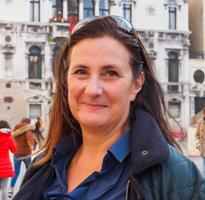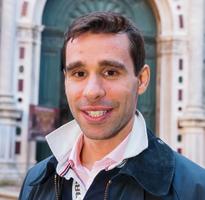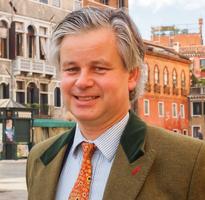There are, on rare occasions, small pockets of time where it is necessary to take oneself aside and take stock of where you are at that precise instant of your life. One of my great friends calls it 'having a moment' which I rather like. After all, what is life but a series of moments that we look back upon and recall our strongest emotions? We cannot remember everything that happens in our lives, just the 'moments' that define it.
Over the years, Andalucia has given me so many moments that I could fill a book. My latest 'moment' found me on a Seville rooftop gazing longingly at the heavily reddening sunset. More of this later!
My journey commences in the hugely under-valued, extremely attractive city of Malaga. Long viewed as a gateway to the southern 'costas', Malaga has invested heavily in cultural attractions, and is now a worthy destination in its own right, rivalling its more renowned neighbours Seville and Granada. Its beach is glorious, its museums (Picasso, Pompidou and Thyssen) are superb and its old town is delightful. Three days here is a minimum.
My zigzag route through Andalucia took me northwest to Ronda, a city I had long wished to visit. Situated on the edge of its famous 100m gorge, the Parador of Ronda makes for spectacular viewing and a drink on the terrace is an absolute must. The city itself was rather pleasant, not to mention hot - it was 46 degrees in July so spring and autumn are definitely the more comfortable times of year to visit this part of the world.
Having sampled some of Andalucia's finest wine from the vineyards near Ronda, I headed eastwards towards one of Spain's most historic and beautiful cities - Granada. My first visit to the city would not leave me disappointed. First stop was the quite incredible Alhambra Palace, a Moorish fortress consisting of elaborate gardens and the royal palace. The views were breath-taking, positioned high, over-looking the old quarter of the Granada and the Sierra Nevada mountain range beyond. Pre-booking your entrance tickets is essential and if, like me, you arrive in July, ensure you go early to avoid the fierce sun. My personal Granada highlight is the old quarter - the Albayzin - a labyrinth of windy streets and vivid colour. Take comfortable walking shoes as many of the streets are cobbled and up steep slopes. Every turn offers something new - a little church, an historic residence, bougainvillea filled walls and so on.
Venturing west to Cordoba, the undoubted highlight is the 12th century Mezquita, a Moorish mosque, converted into a Catholic cathedral, which must rate as one of Europe's finest buildings. By contrast, the city itself feels bustling and vibrant and is host to over 15,000 students. Take two nights here to take in the sights.
Heading southwest through some of the region's prettiest countryside, I arrived at Arcos de la Frontera, a dramatic pueblo blanco that will satisfy every photographer's dreams when you conjure up the image of a white-washed town. Perched precariously on limestone cliffs, 150 metres above the valley, the Parador de Arcos offers incredible views but remember to upgrade to a superior room for a little more space (and don't forget your camera).
Continuing southwest, my journey took me to the edge of the continent at Cadiz, a surprisingly busy, yet splendidly Spanish combination of fine beaches, flamenco bars and all the benefits of an authentic working city. The beaches will keep the kids happy, whilst the variety of shops, bars and restaurants will entertain those with itchy feet. Cadiz is also on the train line so car hire is not essential, though it is recommended if you wish to explore the largely unspoilt coastline.
Which brings me nicely to the pretty seaside town of Rota (not on the train line). More renowned for its nearby American naval base, it is a simple, yet pretty beach resort, a million miles away from the high-rise resorts on the Mediterranean coast. Expect a slow pace of life, great seafood (particularly the tuna) and a sense of nostalgia which might take you back to family holidays as a child.
Inland slightly (and back on the train network) is the beautiful city of Jerez, best known for its sherry and its horses. If these are your primary reasons for visiting the city, then you will not leave disappointed as you can walk to sherry houses and the Royal riding school from the centre of the city. That said, the city is rich in history and it makes a great base to explore the surrounding area as well. I highly recommend the Villa Jerez as a base for a couple of days, offering great service and a lovely pool in the gardens.
The final stop on this particular tour was the wonderful city of Seville, a city where car hire is definitely not recommended due to its maze of twisty streets. The city remains my favourite in Europe and the reasons for visiting are endless. For me, this stunning low-rise town encapsulates what the entire region is all about. Each street tells a different story: a little church, a crumbling old townhouse, an ornately decorated tapas bar (often with original Andalucian tiles). With a comfortable pair of shoes, a map and the Kirker Guide Notes, you can lose yourself (quite literally) in the network of back streets that make up the Jewish quarter.
Which is where I found myself having my 'moment', sitting on the roof terrace of the Casa 1800 watching the sky turn red and the white-washed buildings turn pink. Do locals ever get bored of this view? That, I cannot answer, but what I can say is that if I didn't have a flight to catch it would be likely that I would still be on that roof terrace, ice cold beer in hand with a plate of morcilla within grasp.































